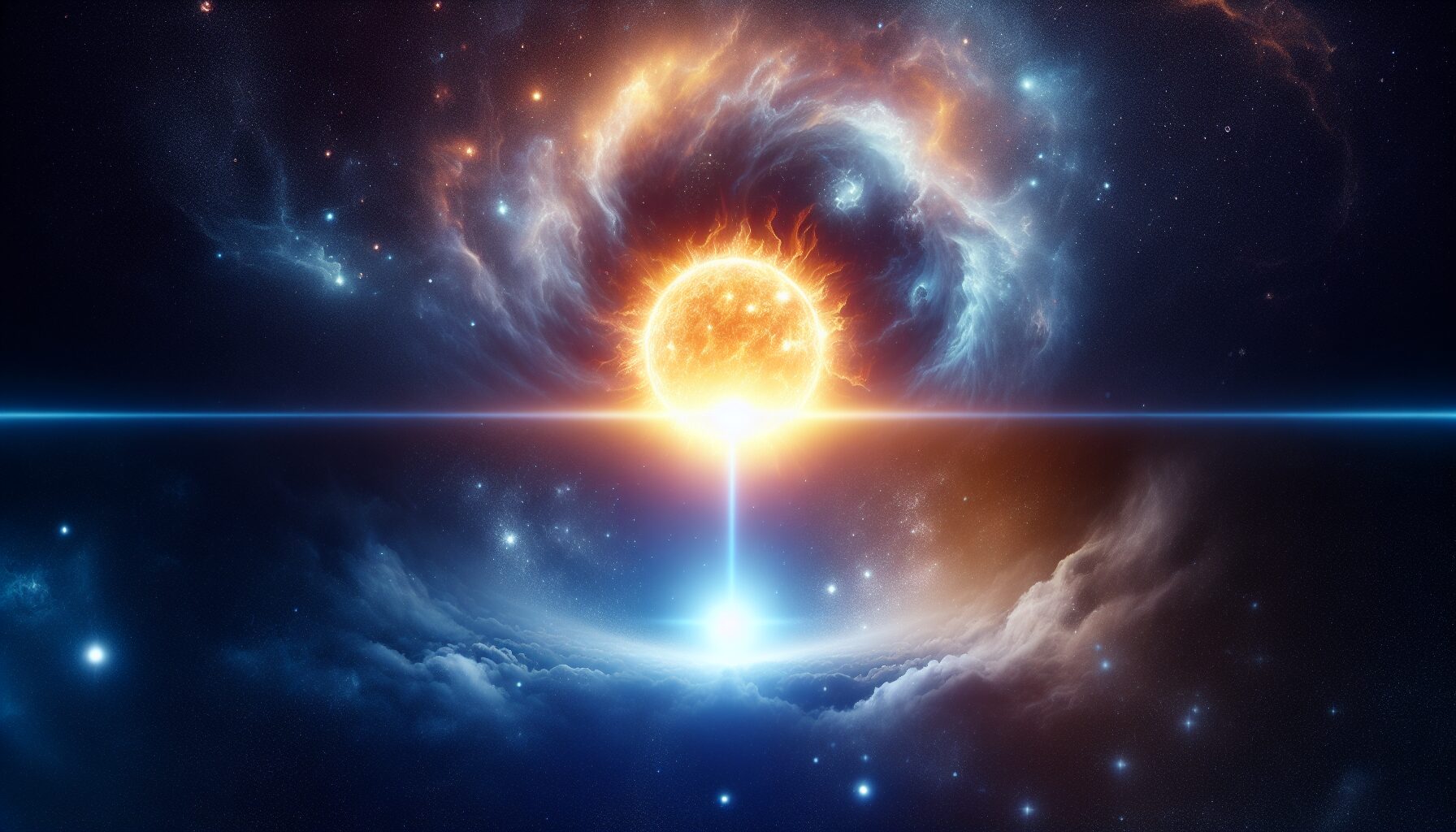Cosmic Decay: From Nuclear Fusion to Eternal Stillness
The universe, a seemingly eternal expanse of stars, planets, and galaxies, is constantly in flux, driven by the inexorable processes of cosmic decay. Central to this majestic theatre of destruction and creation is the process of nuclear fusion, a powerful force that fuels the stars yet is destined to fade, leading the universe towards a state of eternal stillness.
The Birth of Stars and the Role of Nuclear Fusion
Stars are born from the gravitational collapse of gas and dust in the interstellar medium. As particles draw closer, pressure and temperature rise, eventually igniting nuclear fusion at the star’s core. This process powers the star, converting hydrogen into helium, and releasing colossal amounts of energy in the form of light and heat.
Nuclear fusion, as noted by Dr. Steven E. Plate, an astrophysicist at Harvard-Smithsonian Center for Astrophysics, is the process that “not only provides the energy necessary for stars to shine but also synthesizes new elements, building the chemical complexity of the universe.”
The Life Cycle of a Star
Throughout their lives, stars balance the outward pressure of thermal radiation from fusion against the inward pull of gravity. However, this balance is not eternal. As stars exhaust their nuclear fuel, their fates diverge based on mass. Small stars fade gently into white dwarfs, while massive ones can explode violently as supernovae, creating neutron stars or black holes.
During their endings, stars enrich the cosmos with heavier elements, a process poetically called stellar alchemy. As Carl Sagan famously said, “We are made of starstuff.” This cycle not only creates the building blocks for planets and, eventually, life but also dictates the ultimate fate of the cosmos.
Heat Death: The Universe’s Quiet Demise
Despite the seeming immortality of the stars, they too will succumb to the cosmic entropy that dictates the universe’s expansion. As stated by Sir Roger Penrose, a prominent mathematician and physicist, “In the far future, the universe will have expanded to the point where stars can no longer form, as the concentrations of gas and dust necessary will be too diffuse.” This concept aligns with the theory of heat death, a potential end scenario for the universe.
In a heat-dead universe, all energy will be evenly distributed, leaving no room for the temperature differentials necessary for energy transfers—a state of uniform thermodynamic equilibrium. All processes, including life and stellar activity, would cease, entailing an eternal stillness.
The Implications for Time and Space
Contemplating the cessation of cosmic events impacts our understanding of time itself. If the universe achieves complete disorder, will time, defined by change and events, hold any meaning?
“Time is what keeps everything from happening at once,” mused the physicist John Archibald Wheeler, yet in a universe of stillness, this essential distinction blurs.
As astrophysicist Brian Cox explains, “The universe appears from our vantage point to be a place that is moving from order to disorder… In the fullness of time, it will evolve to a place that is pure disorder.”
Beyond Eternity: The Potential for Renewal
While the heat death scenario paints a bleak picture, some theories suggest possible outcomes where the cosmic story is not one of finite decay. Theorists speculate about potential cycles of cosmic collapse and rebirth, akin to a “Big Bounce” following a Big Crunch.
Moreover, quantum mechanics introduces uncertainties, including the emergence of new structures from apparent vacuums as posited by Heisenberg’s principle. These concepts infer that even at the universe’s end, there could be opportunities for rebirth amidst the decay.
Ultimately, the story of cosmic decay, from nuclear fusion to a potential stillness, encapsulates both the grandiosity and transience of existence. Each star’s life and death echo the cosmic dance of creation and dissolution, a fleeting act within the vast play of the universe.
While our understanding continues to evolve, engaging with these profound cosmic narratives reminds us of our own temporality and connection to the cosmos. As the universe unfolds in its inevitable journey towards entropy or rebirth, humanity’s quest to understand these mysteries endures, perpetually lighting the dark with curiosity and wonder.
